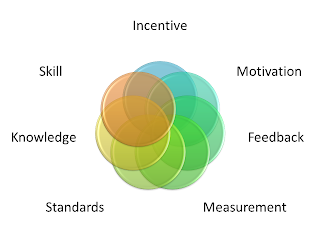Success Factors for Training

What are those things in your training business (university, division, unit) that you believe will help you achieve a successful outcome to your business strategy? They may be related to cost reduction, corporate objectives, new technology, process changes, etc. What will help ensure your success? They may be unique to your training business or new products for your customers. The standard things for a successful training business are adequate capital, cash flow, good employees, and customers. These are not the success factors for your business - they are the result of your success factors. Again, you need to establish the key success factors that will complement your business strategy. What gets the customer to choose your product and - call you ; browse your web site; meet and buy from your sales person; or come into your training center? Call Me! Success Factors fall into several categories : Set realistic business objectives and goals Understand your uniqu...



